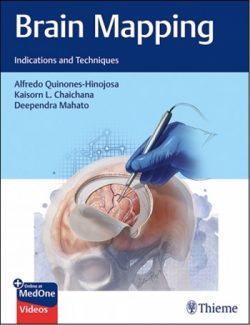This atlas is currently the most systematic and comprehensive atlas of the tree shrew brain. The purpose of this book is to help scientists acquire accurate coordinates of the brain regions of the tree shrew, which is becoming a popular animal model for a variety of human diseases. This atlas contains series of 192 coronal sections, 36 sagittal sections, and 49 horizontal sections using Nissl staining or acetylcholinesterase histochemistry as well as a series of diagrams in stereotaxic coordinates. Original photomicrographs are obtained at single-cell resolution. In addition, we also referred to magnetic resonance images acquired at 250 um intervals with a magnetic resonance scanner 9.4T. Many brain structures are first identified in tree shrews and accurately presented in a stereotaxic coordinate system. The Bregma coordinates system is used for the first time in this tree shrew brain atlas. The atlas represents the collaboration between two indispensable skills of brain research, neuroanatomy and stereotaxic surgery. It will be extensively used in neuroscience research, particularly tree shrew brain study, and will help graduate students and researchers understand brain anatomy and acquire accurate reference coordinates.
Preface.- Acknowledgements.- Author Information.- Background and Methods.- Coronal sections of the tree shrew brain.- Horizontal sections of the tree shrew brain.- Sagittal sections of the tree shrew brain. Jiang-Ning Zhou is a professor and vice dean from College of Life Sciences, University of Science and Technology of China. He is the director of CAS Key Laboratory of Brain Function and Disease, and the director of the Cognitive Neural Biology branch of the Chinese Neuroscience Society. He serves as the board member for the journal “Neuroscience Bulletin” and “International Journal of Clinical and Experimental Medicine”. His research focuses on the molecular mechanisms of neural diseases and mental disorders. He has published more than 100 research articles in these fields.Zhou mentored 40 Ph.D. students. In 2011 he obtained Excellent Scholar Awards from Chinese Neuroscience Society. In 2014 he received Natural Science Awards from the Ministry of Education of China.
This atlas is currently the most systematic and comprehensive atlas of the tree shrew brain. The purpose of this book is to help scientists acquire accurate coordinates of the brain regions of the tree shrew, which is becoming a popular animal model for a variety of human diseases. This atlas contains series of 192 coronal sections, 36 sagittal sections, and 49 horizontal sections using Nissl staining or acetylcholinesterase histochemistry as well as a series of diagrams in stereotaxic coordinates. Original photomicrographs are obtained at single-cell resolution. In addition, we also referred to magnetic resonance images acquired at 250 um intervals with a magnetic resonance scanner 9.4T. Many brain structures are first identified in tree shrews and accurately presented in a stereotaxic coordinate system. The Bregma coordinates system is used for the first time in this tree shrew brain atlas. The atlas represents the collaboration between two indispensable skills of brain research, neuroanatomy and stereotaxic surgery. It will be extensively used in neuroscience research, particularly tree shrew brain study, and will help graduate students and researchers understand brain anatomy and acquire accurate reference coordinates.
The most systematic and comprehensive atlas of the tree shrew brain until now
Containing ample coronal, sagittal and horizontal sections using Nissl staining or acetylcholinesterase histochemistry as well as series of the diagrams in stereotaxic coordinates
Helping graduate students and researchers to understand brain anatomy and get accurate reference coordinates





